

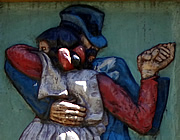
Buenos Aires, the capital of Argentina, is a lively city with distinctive neighbourhoods or barrios such as colourful La Boca, upmarket Recoleta, newly renovated Puerto Madera.
Tango dancers can appear almost anywhere, the joyful birthday celebrations at the market of San Telmo were great fun and we had one or two very good meals too!
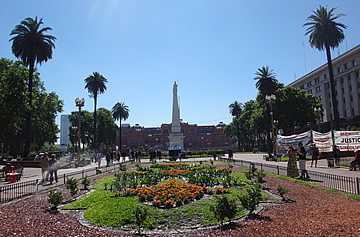
We had a very late arrival in Buenos Aires due to a delayed departure from El Calafate so we could have done without the moaning transfer driver and his tales of a terrible day!
Buenos Aires, situated on the banks of the Rio de la Plata, dates from the early sixteenth century. Various European countries vied for supremacy here - Spanish, Portuguese, English and French, though it was the Spanish who ruled for much of its early history. It was founded as a centre for trade and became the capital of the Spanish viceroyalty which more or less encompassed the territories of present day Argentina, Bolivia, Paraguay and Uruguay. Smuggling also flourished. Following independence in 1816 the city became rich.

On our first day, in a small bus of about a dozen passengers with a very good guide, we had a morning tour of the city, including areas we would have been reluctant to go to on our own given the dire warnings about crime and safety - or lack of it!
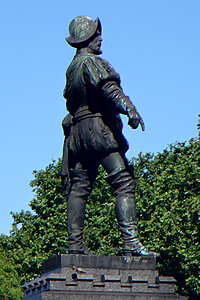
The main square, Plaza de Mayo - the location of start of the May 1810 revolution, is where to find the nineteenth cathedral which stands on the site designated for the city's premier church since the early sixteenth century. Pope Francis, the current pope, was archbishop here before he became pope in 2013, travelling to and fro on the underground.
Here also is the pink government building, the Casa Rosada, to which the president gets helicoptered in every day from her home!
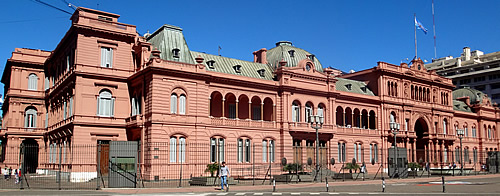
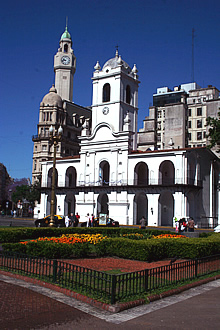
Plaza de Mayo is also the place where demonstrations take place every Thursday for the disappeared - up to 30,000 people disappeared between 1976 and 1983 when the the military dictatorship was finally replaced by a democratic government.
When we were here soldiers were demonstrating in the square because they hadn't been awarded the pension given to those who took part in the Falklands war, ostensibly because they served only on the mainland.
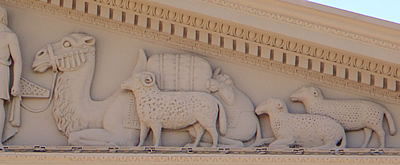
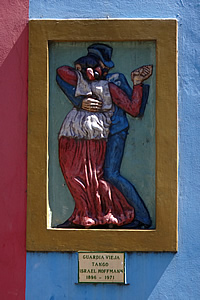
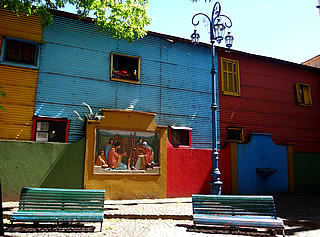
Colourful La Boca is a bit of a tourist trap and we were warned to stick to the main tourist streets if we returned on our own as outside this area it is dangerous.
Nevertheless, the colourful buildings, tango dancers and outdoor cafés are evocative of a particular South American vibe and rather unique in the city.
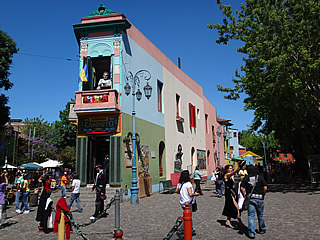
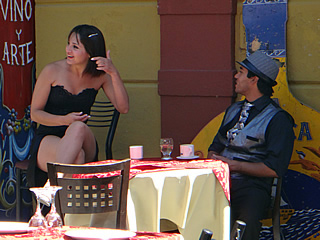
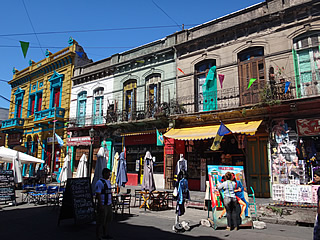
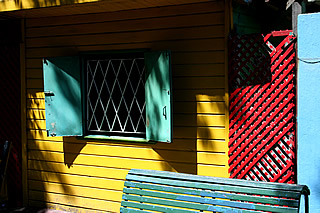
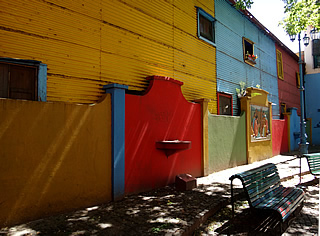
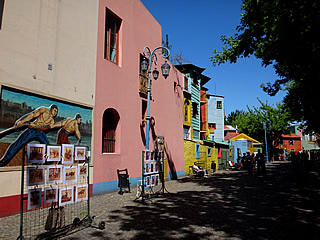
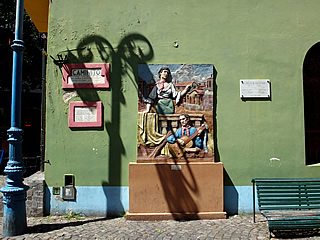
La Boca is the old city port neighbourhood and there are references to maritime occupations in some of the street sculpture.
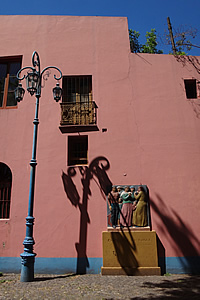
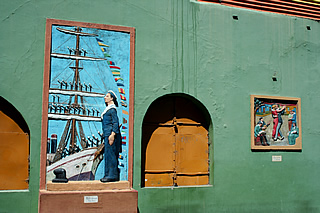
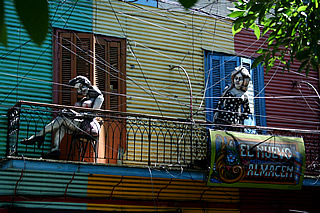
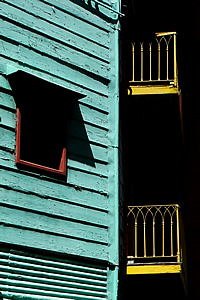
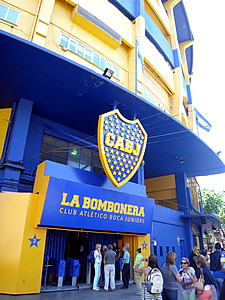
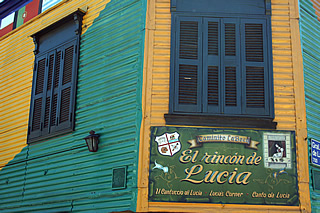
The football stadium of famous Boca Juniors is in this area, one of the clubs Maradona played for. The ground is nicknamed la Bombonera as it is supposed to look like a chocolate box.
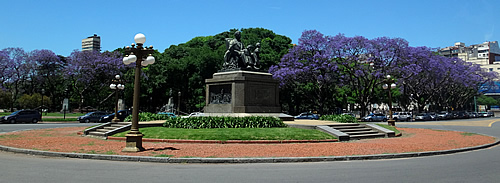
At the end of the tour we asked to be dropped off in Recoleta which is a good place to find lunch, and also because we wanted to visit the famous cemetery.
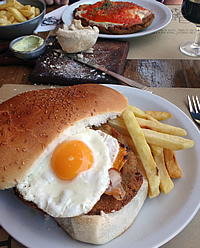
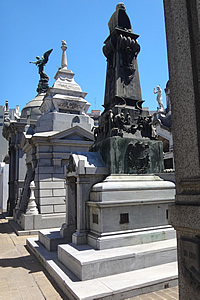



We had a great lunch at El Club de la Milanesa where all the dishes come with a large flat piece of breaded pork inspired by the traditional Milanese which is like Wiener Schnitzel but with the bone left in, so these were actually closer to schnitzels! I couldn't finish mine and had to leave most of the enormous bread bun.
Afterwards we spent a long time in Recoleta cemetery. It has some beautiful tombs and very famous people buried there including Eva Duarte Peron, the (second) wife of president Juan Peron who was immensely popular due to her support of the poor and women's rights. Commonly known as Evita, she died of cancer at the very young age of 33 and is interred in the Duarte family tomb.
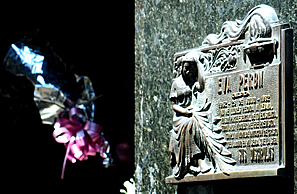
One of the most poignant tombs - also very beautiful - is that of Liliana Crociati de Szaszak. The story goes that she was on honeymoon in Austria when an avalanche struck the hotel she was staying in; she was only 26 when she died. The neo-gothic tomb was designed by her mother and uses only wood and glass. Liliana is depicted with her hand resting on her dog, Sabu, which is said to have died at the same time thousands of miles away in Argentina.2 A plaque is inscribed with a poem written by her father asking "why?"
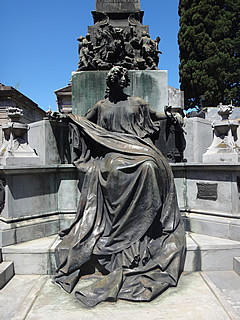
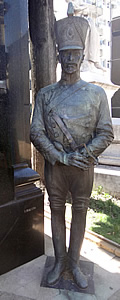
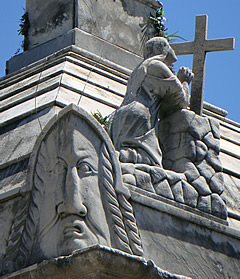
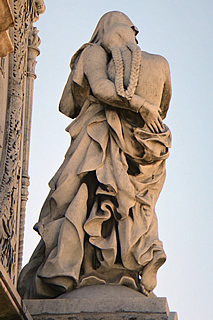
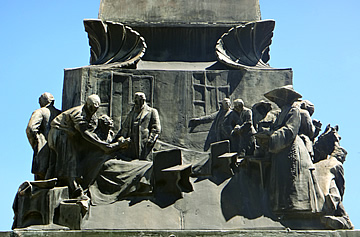
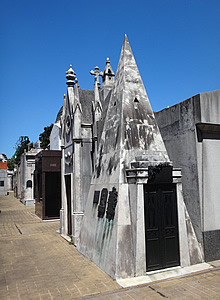
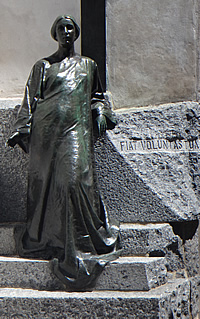
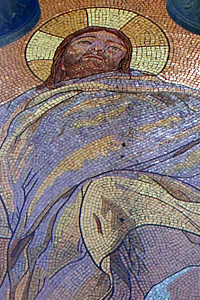
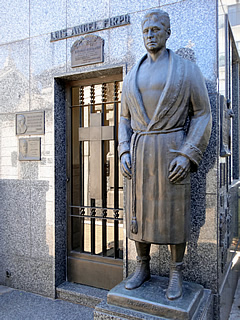
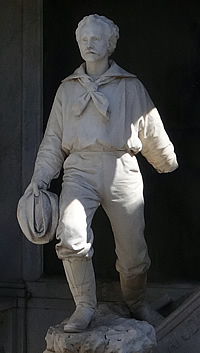
The statue of an Italian immigrant on the Roverano family tomb is unique in the cemetery, representing a working class man as he steps off the boat in Argentina in search of a new life. The Roveranos were of Italian origin and made their fortune with their café Confiteria del Gas.4
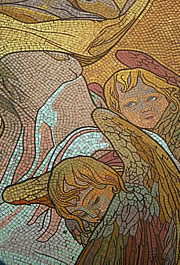
It was immensely hot in the cemetery, we were there at exactly the wrong time of day, early afternoon. The sun was beating down and reflecting from all the bright stonework - we navigated the cemetery via whatever shade was available. We were very grateful for the free, ice-cold orange squash being distributed outside!
There was also some great street tango in Recoleta!
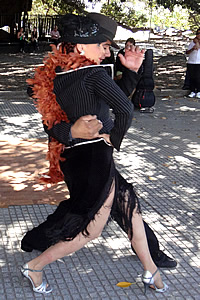
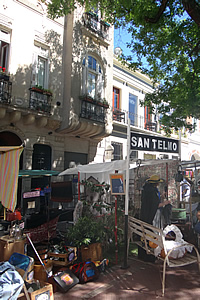
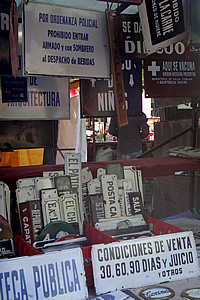
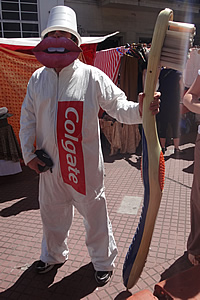
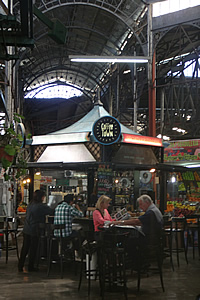
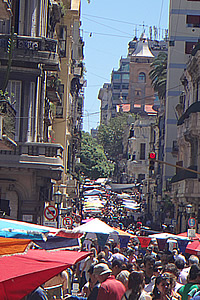
A beautiful Sunday we decided to visit the famous Sunday Market at San Telmo.
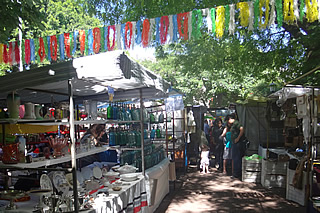
San Telmo is one of the oldest barrios of the city and, in common with many of the others, its wealthy residents fled north to escape epidemics of cholera and yellow fever. Many smart buildings remain standing, though often converted into multiple residences.
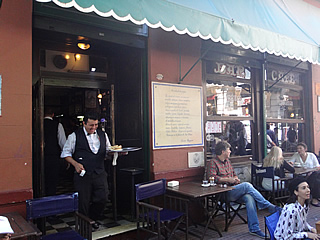
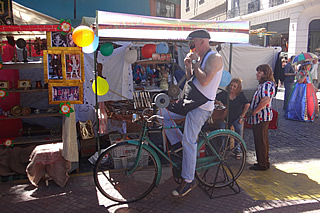
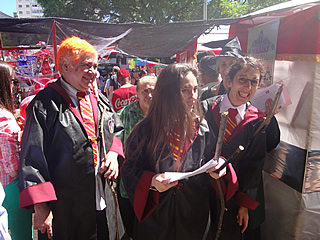
The open air antique market is held at Plaza Dorrego, but there is also a large and airy covered market, which sells food, fruit and vegetables as well as antiques and the long street Defensa is lined with stalls, mostly directed at the tourist market, and was heaving with people.
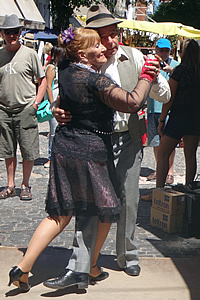
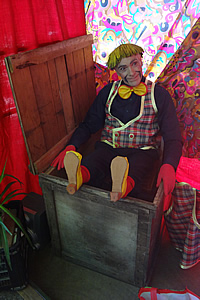
Fighting through crowds around stall after stall of tourist tat is not our idea of a good time but Plaza Dorrego was fun because we were particularly lucky: it was the 43rd birthday of the market and there were big celebrations with many stall holders dressing up.
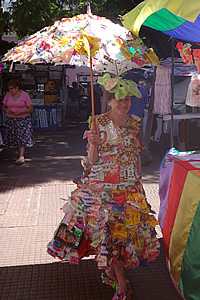
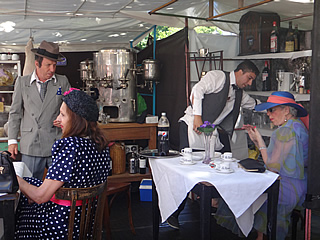
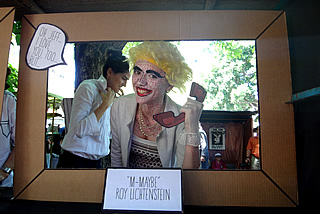
In Plaza Dorrego the stalls concentrate mainly on memorabilia and there are tango dancers and atmospheric cafés and bars. Everyone was really friendly and more than happy to have their photographs taken.

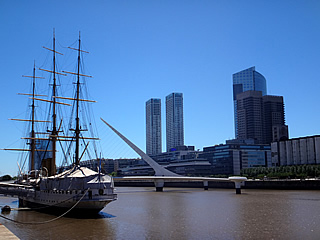
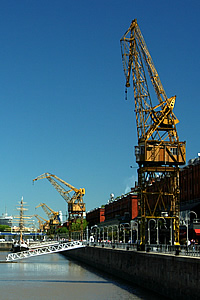
We walked from San Telmo to the renovated docklands area on a long stretch of the Rio de la Plata.
It certainly has been spruced up - it must be an amazing contrast to how it would have looked when this was a thriving port, full of ships and busy people, noisy, dirty, and probably dangerous.
Now people row on the river which is spanned by an elegant modern bridge. The beautiful old red brick warehouses have been renovated and now house restaurants and cafés.
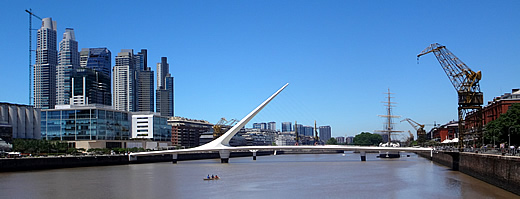
We ate at Cabana las Lillas, expensive but excellent, the best meal we had in Buenos Aires. Fabulous tenderloin and Chocolate Nemesis dessert (shared!) rounded off with free limoncello.
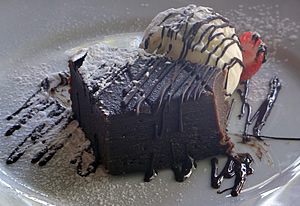
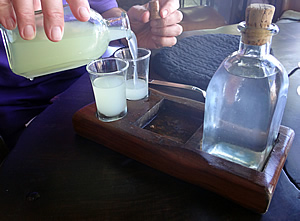
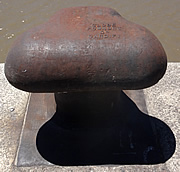
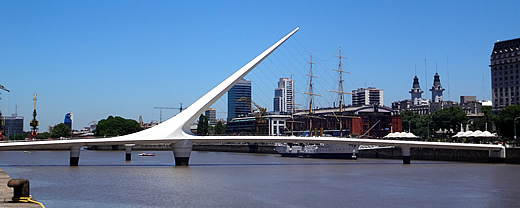
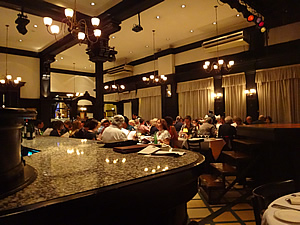
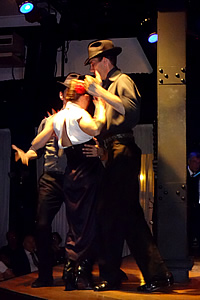
A friend and colleague in Buenos Aires arranged a VIP dinner tango for us at El Querendi. We particularly wanted a more intimate setting, not in a theatre, and this seemed to fit the bill. It is over 150 years old, quite small with a Paris café feel to it. It has a small raised stage which has a hefty metal column on it but the dancers and singers did incorporate it into their acts where they could. Even with a special deal this was expensive at around $250 for us both but it's something we felt had to be done when visiting the city.
For that price we had a table right in front of the stage, a bottle of sparkling wine in an ice bucket, a bottle of red wine, water and really any drinks we wanted - we didn't get through half of it! The dinner was four courses but not very good at all and a rather restricted menu. However, it was the dancing we'd come to see and this was excellent - legs flying all over the place!
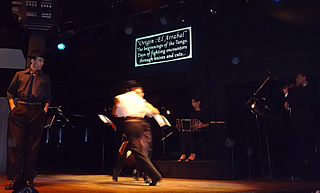
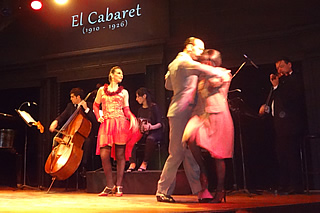
The show here goes through the history of the tango and its different styles and has short explanatory films interspersed with the dance styles performed by dancers in front of four musicians: pianist, double bass, accordion and violin. There were also a couple of singers who were very loud - one for sure didn't need the microphone!
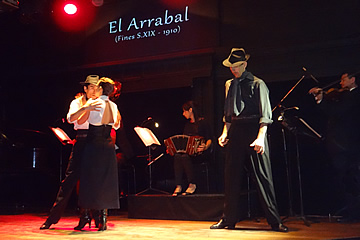
At the end of the 19th century the style known as El Arrabal developed out of the streets and the violent encounters between young men.
After 1910 a more sophisticated style emerged, called El Cabaret, which dominated upto 1926.
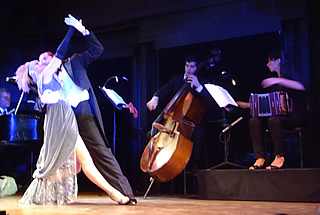
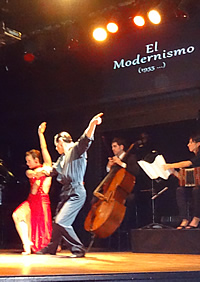
It was at this point that Carlod Gardel became an iconic figure in the history of the tango. He was a singer who brought the tango to wider audiences in his film appearance and developed the style Tango Canción.
With its increased popularity the tango moved into dance halls where a freer style known as Tango Salon developed in which many couples danced together. Modern tango grew out of this, becoming a distinct form around 1955.
The show finished with the dancers all on stage and two singers below for a grand finale - a great show.